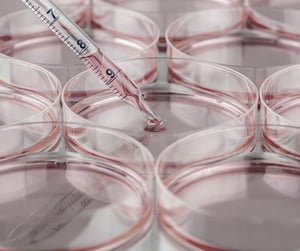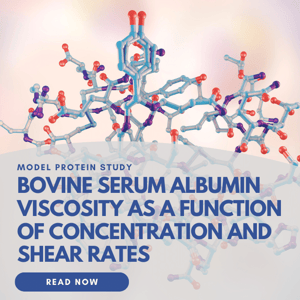
Viscosity of DMEM Cell Culture Media
Application Note Download
Cell culture media is a complex fluid filled with nutrients required for cells to grow, proliferate, and differentiate. Media is specifically designed to maintain the ideal nutrients, hormones, pH, and osmotic environment necessary for cell growth. In particular, the amount of glucose and other nutrients can modify the rheology of the media itself, which can impact cell growth and differentiation. Additionally, different types of cells prefer different types of media. For example, many mammalians cell lines are grown and maintained in Dulbecco’s Modified Eagle Media (DMEM), while insect cells are grown in Grace’s medium.
Characterizing the differences between formulations is vital for developing new products and for maintaining quality control for existing product lines. In this application note, we investigated the viscosity of a few DMEM formulations. We showed that subtle changes in viscosity can be detected based on the different amounts and types of nutrients used in the formulations.
Goal: Viscosity data for different formulations of DMEM were collected on VROC® initium. Moderate viscosity differences were observed based on differences in glucose concentration as well as differences in the nutrients used in the media formulation. Taken together these results demonstrate that subtle differences between DMEM formulations can be detected by measuring viscosity with the VROC® initium automated viscometer system.
.jpeg?width=300&name=Woman%20scientist%2c%20documents%20and%20hands%20writing%20_575258496-min(1).jpeg)


.png?width=200&height=58&name=RheoSense%20Logo%20(REGISTERED).png)



